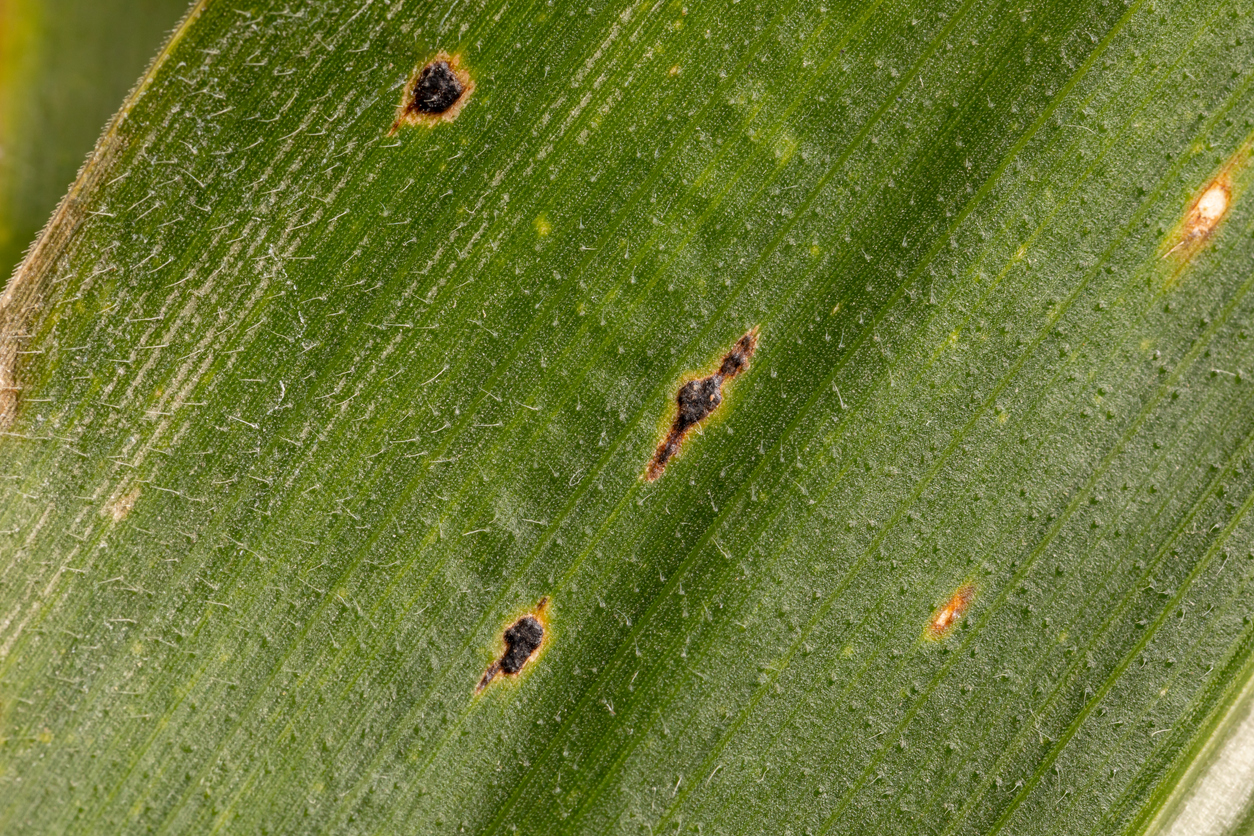Corn tar spot is a fungal disease characterized by telltale black circular speckles that appear on previously healthy corn leaves. Over time, the spots multiply, hindering the plant’s ability to photosynthesize. This results in yield losses due to poor kernel formation and reduced stock integrity.
Though the disease has been widespread throughout South America, Central America, and Mexico for centuries, the U.S. documented its first outbreak on Indiana farms in 2015. Since that time, farmers across the Midwest have been battling the pathogen. Here are the basics to know if you encounter a corn tar spot in your fields.
How to Identify Corn Tar Spot
Corn tar spots manifest as small, dark, tar-like specks on the upper and lower surfaces of corn leaves. It’s often described as looking like someone flicked a splatter of black paint on the foliage. Unlike other leaf issues with a similar appearance, tar spot lesions remain firmly attached and cannot be easily rubbed off.
As the disease progresses, the specks may coalesce, forming larger lesions with irregular shapes. As the lesions accumulate in later stages, the crops take on a distinctive, blackened appearance.
While these visual cues are crucial for diagnosis, ruling out other potential causes is essential, as some insect-related issues can mimic tar spots. Early detection and accurate identification, often through collaboration with agricultural extension services and diagnostic labs, are pivotal for implementing timely and effective management strategies to mitigate the impact of corn tar spot outbreaks.
Options for Combatting Corn Tar Spot
Fighting corn tar spots depends on corn maturity and disease progression. Cool, humid weather enables the pathogen to spread, making elimination more challenging. Regardless, there are three main avenues for fighting the fungus. It would help if you used several or all of these tactics for the best results.
- Fungicide– When applied correctly, several commercial fungicides are effective against corn tar spots. Fungicides are best used after tassels emerge and before kernels develop into the R2 (blister) stage.
- Hybrid seed selection– No corn hybrids are entirely resistant to tar spots, but several exhibit partial resistance, reducing disease severity. If your fields become infected, pay close attention to differences in fungal development and progression among the hybrid varieties you’re using.
- Cultural practices– As with other types of crop diseases, two of your best defenses against repeated infection are crop rotation and tillage. Fungal spores on infected crop residue left after harvest can persist until the next planting season, especially following mild winters. Rotating crops allows more time for infected residue to break down between corn plantings. Tillage also helps bury residue and any pathogens it harbors, minimizing the spread of spores.
Hopefully, the tar spot does not infect your future crops. But know that your local John Deere dealer can supply the sprayers and tillage equipment necessary to fight these destructive fungal diseases.
